Telecommunications, Cable and Utilities
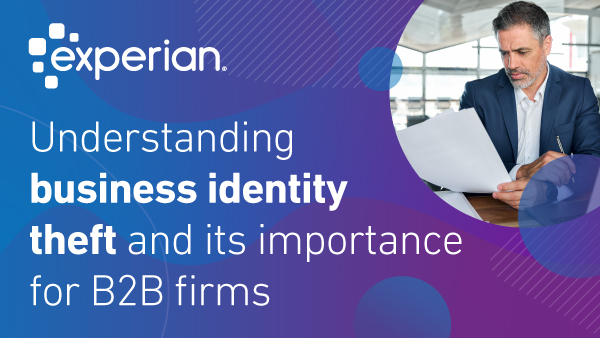
Discover how business identity theft threatens B2B firms and learn effective strategies to protect your business and clients. Stay informed and secure.
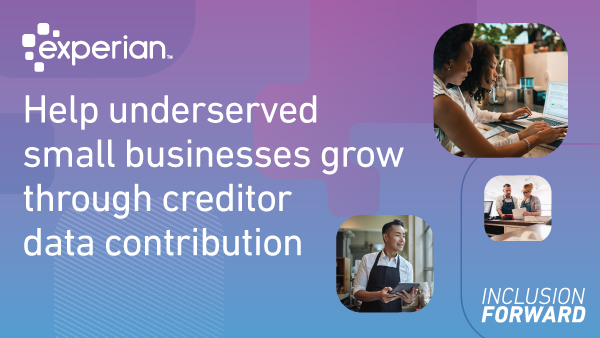
A recent credit study of a regional utility found significant numbers of small businesses with no credit profile despite a history of positive payments.

The team from Experian is very excited to be attending the TRMA 2022 Fall Conference in Louisville, Kentucky October 18-20th. As a Gold Sponsor, we can't wait to meet with you in person to hear your challenges, your goals and to share some of the things we have been working on. Please reach out and connect with us on LinkedIn to get a conversation started. Beth Bayer Neal Rogers Meg Wilson Mathew Robey James Brezack Don't miss Neal Rogers breakout session on Oct 20th at 10:45: Data-driven strategies to deliver consistent growth and maintain positive customer experiences As telco companies face an increasingly competitive environment, they are looking for ways to drive continuous growth. With industry-wide efforts to capture market share, telco providers are looking to enhance personalized targeting while mitigating risk and fraudulent activities while continuing to focus on serving underserved communities. In this session, we will explore how to acquire and approve more consumers with better data, less friction, fewer deposits, fewer vendors, and potentially less cost.Learning Objectives: Learn about enhanced, unrivaled data to bolster growth while mitigating risk and spearheading DEI.A case study illustrating the effectiveness of Experian’s composite risk model in helping to decrease deposits and increase approval time. It promises to be a great session, see you all in Louisville, KY!

As business delinquencies rise in response to COVID-19, credit departments are becoming increasingly challenged. In our August 13th Sip and Solve webinar, John Krickus and Andrew Moore will be on hand to share some strategies for maximizing receivables amid rising delinquencies. Managing receivables has never been more important or more challenging. Traditional approaches may no longer apply. In this 15-minute Sip and Solve session, we discuss some solutions for effectively and efficiently handling the increase in receivables many companies are facing. After watching this talk you will learn three key takeaways: Prioritizing receivable management in today's environment Analytic tools for managing receivables Flexing receivables strategies to meet your company's priorities Click to view full slides and transcripts from this session.
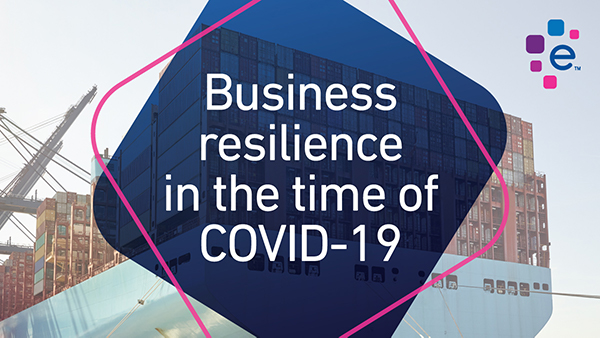
In a favorable economic climate, business resilience is often treated as an afterthought. Success is measured in rapid growth and leaps of progress, while failure is little more than a tempering of that expansion. It’s only when things slow down - like during a global pandemic - that companies are forced to take stock of the ground they stand on. As the economy slows to a crawl and entire industries feel the squeeze, business resilience will determine which organizations make it through to the other side. Whether you’re on the supply side or the demand side, chances are your organization is being tested right now. Here are some practical strategies to stay resilient in the time of Covid-19. Gerard Smith, President of Global Risk Management Solutions (GRMS), works with companies who are either on-boarding new suppliers or evaluating current suppliers. When the Covid-19 pandemic disrupted supply chains in most industries, many of these companies started scrambling to find replacement suppliers. Finding a reliable supplier is always a challenge, but it’s even more difficult during a global pandemic and economic crisis. The best practice here is still to vet new suppliers carefully. Smith’s company creates a risk assessment program for Experian clients that analyzes 50 different financial and legal components, including the following: If they’re on the OFAC sanctions list If they’re financially stable If they actually have the certifications they claim to have If they have insurance If they’ve received negative press Many companies fail to do their due diligence when it comes to suppliers, especially if they’re trying to fulfill orders quickly. More often than not, this leads to bigger problems down the line. If you hire a supplier that’s hemorrhaging money, for instance, they may file for bankruptcy right after you pay them for a major shipment. Companies that use GRMS will be notified regularly if a supplier’s financial or legal status changes. If a supplier cancels their insurance coverage, for example, that could indicate financial struggles. Staying abreast of information like this allows businesses to be proactive with suppliers and avoid being blindsided. Make Sure Clients Are Financially Healthy On the flip side of the buyer-supplier relationship, suppliers are now being asked to extend due dates. Deciding how to comply with these requests can be tricky. Most want to be understanding and reasonable, but there is often legitimate concern over whether they’ll receive payment. Brodie Oldham, Senior Director of Analytic Consultancy for Experian, said Experian offers several services for suppliers who need to gauge how reliable their customers are in this moment. Experian has a special Covid-19 risk index that suppliers can overlay on top of existing credit models. This tool can help determine whether or not a client is in an unstable financial position. If the company operates in a highly impacted part of the country or industry, the supplier can use that information to change the terms. For example, they can sell fewer items to minimize the risk of an unpaid invoice. Experian also monitors credit utilization for business credit cards and other lines of credit. If a company’s credit utilization surpasses a certain threshold, they can alert the supplier who can halt future shipments until the utilization decreases. Find Faster Ways to Evaluate Creditworthiness Many suppliers depend on a company’s credit information to determine its reliability as a buyer. Likewise, credit bureaus are being forced to reevaluate their models in response to the changing business landscape brought on by Covid-19. Enter the agile credit function. The term agile has traditionally been used in the context of software development to describe an iterative approach where requirements and solutions evolve through collaboration between cross-functional teams. It allows companies to adapt to new requests quickly and improve time-to-market. Agile is all about being nimble and responsive - something credit bureaus are prioritizing in today’s uncertain economy. Agile credit means finding new, faster ways of evaluating customers and determining their ability to pay, in a time when that information can change daily. “When everything shut down in March, credit people got thrown for a loop,” said Dan Meder, Vice President of Consulting, Product Marketing and Alliances for Experian Business Information Services. “They needed a way to manage that change very quickly.” That’s where having an agile credit approach comes in. “It’s about using agile principles in your credit function to respond more quickly to changing market needs,” Meder said. Using an agile credit system helps suppliers decide what kind of terms to offer their customers. Many companies are asking suppliers to extend their terms and due dates, often switching from net-30 to net-60. Suppliers then have to decide if they can trust these companies to repay them within that longer time frame, Meder said. If companies in this position use an agile credit function, they can be more responsive and confident in the terms they set out because they’re basing their credit policies on the current state of their customer environment. This requires operating with the latest possible information on how current economic conditions are affecting their customers. Meder said that making credit function more agile requires direction from the head of the credit department and other members of that department. They can also utilize software programmers if the automatic process needs to be updated or any outside consultants for specific analytical expertise. “The idea is to bring together a team of people with direct involvement in managing the credit function to assess how best to manage the customer experience given the current state of the customer environment,” he said. “This includes setting policies around risk assessment as well as credit terms and collection processes.” Meder said companies should have technology that allows them to tinker with their credit function so they can make changes quickly. “This is especially true in a fast-changing or uncertain environment such as what we are seeing with COVID-19 and the uncertain effect it is having on our economy’s future,” he said. “In fact, it is turbulent times such as these where being “agile” is most important since the credit department needs to be able to alter course quickly if the customer environment changes for better or for worse.” Consider Being Flexible With Clients While delayed payments from clients is upsetting, avoid taking your current client relationships for granted. While a more stringent approach from suppliers is understandable right now, Meder cautions companies to remember that the pandemic will end at some point. At that time, companies will remember which suppliers were flexible about payments, due dates and terms - and which companies weren’t. “If you weren’t good to them while they were struggling, they’re going to forget about you when things turn around,” Meder said. To find out how fine-tuning your company’s credit function can help it weather the current economic crisis, reach out to your Experian representative.
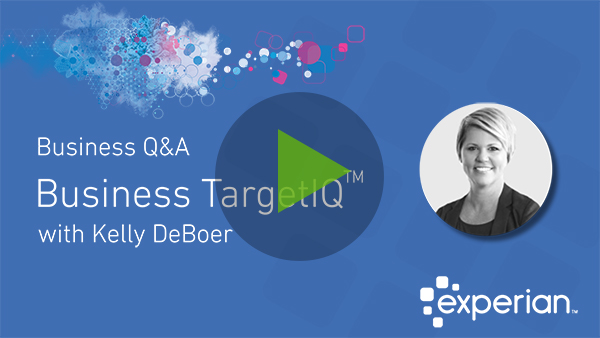
Experian Business Information Services recently introduced a powerful new marketing platform called Business TargetIQ. Product Manager, Kelly DeBoer answered a few questions about the product and described use cases that promote greater collaboration between credit and marketing departments. What does Business TargetIQ do? Business TargetIQ is our new marketing platform so it's a B2B marketing platform where clients can access data for marketing applications. How is it different from other business marketing platforms? It is unique in that it not only includes your standard or core firmagraphic information but also includes Experian's credit attributes. Does it have credit data? What does that mean to marketing or collaboration? Typically marketing data and credit data are housed in separate silos of information. With this tool the information will be combined together which will allow the tool not only to be used in traditional marketing applications for targeting but can also be in that risk factor which applies to different divisions within our client's applications or use cases of the data. Who would most benefit from Business TargetIQ? The thing about Business TargetIQ is it truly applies to all different verticals, as well as all different contacts within the company. So whether it's a financial vertical or a trade vertical, retail, just across the board all clients can utilize this. Anybody that's doing marketing can utilize this platform. What core problems does Business TargetIQ solve? It solves a lot of different problems, so, the most common client issues that are brought to our attention are gaps in data, as well as in the marketing initiatives. So they may have data in-house but they have holes within the data. Our tool will allow them to not only upload their client records and fill in a lot of those gaps that they may have, whether it be contact information, or firmagraphics or address information. It will standardize that data and fill in those gaps. But will also provide the means to again use that data. Our business database which has over 16 million records. They can then utilize that information for prospecting, for data append, for analytics, for research applications, so it solves a lot of problems with regard to marketing and data concerns. How does credit data help with prospecting? So what we find is clients come to us and they may say you know I have an idea of what our clients look like, they're in this SIC or in this industry code, or they have this sales volume or employee size, but what they may not know is on the back end which really helps identify and target those businesses is the credit attributes, so the risk factors around those. So do they have delinquencies in their payments? Have they filed bankruptcies? Do they have UCC filings? So it allows them to take it that next step and not only really define what their clients look like, but identify clients that look like that. Learn More About Business TargetIQ
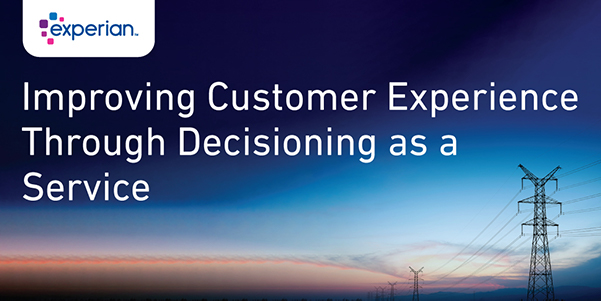
For utility companies, the customer onboarding process can sometimes be a complex, time-consuming, and unpleasant experience, especially if a manual credit decisioning process is in play. Every time a customer interacts with your utility company — be it via the website, telephone, in-person service call, mobile app, or social media — their experience sets the tone for the overarching relationship between the customer and your company. To improve the onboarding experience, many utilities are turning to machine learning to make faster and simpler credit decisions. However, creating a custom machine-learning decisioning engine is complex and can be costly. By leveraging machine-learning capabilities through Decisioning as a Service (DaaS) offerings, utilities can automate the decisioning process and create a frictionless customer experience. For example, a customer applying for service – even with a large utility — can be approved within seconds by an agent using a tablet. Using DaaS to Automate Your Credit Decisions DaaS can be used for many different types of decisioning — prescreening, prequalification, or instant credit. Utilities also use DaaS for authenticating and resolving identities and assisting with the rationalization of deposits. Other uses include improving the customer experience, credit line management, retention, cross-selling and collections optimization. The process is like using traditional decisioning methods where the customer or customer service agent enters the customer’s information into the website or system. The utility system then connects with the DaaS engine through an Application Programming Interface (API), The DaaS engine then aggregates real-time data from the credit bureaus and other data providers about the customer, runs them through business rules — and a decision is rendered. The decisioning engine uses rules and algorithms to create predictive models for credit, fraud and, bankruptcy risk, profitability, retention and other key areas. The DaaS engine then automatically determines the results, such as approval, decline, instant pre-screen, cross-sell, or a collection decision. More than just providing a result, the system helps your utility know exactly how to treat the customer based on their risk level. DaaS also helps utilities by customizing offers that deliver both business value and value to the specific customer. Additionally, the algorithms are continually updated so your decisions are always based on the current business climate, market drivers, and regulatory conditions. Creating a Seamless and Personalized Customer Experience From the customer’s perspective, the process is simple and seamless. Instead of waiting for hours — or possibly days — the customer receives an answer in real-time. If the decision is good news for the customer, they can move on with the process. And if the decision is not what the customer was hoping to hear, they can quickly move on and determine their next steps. There is no waiting, wondering, or anxiety. Using DaaS also creates a more personalized experience for the customer. DaaS recommends the next best step based on the customer’s specific situation, which is an informed way to begin your relationship and sets the right tone for the future. For example, DaaS may recommend no deposit based on risk-level, or a specific product or offer of value to the specific customer. Improving Operational Efficiency and Growing Revenue In addition to more loyal and satisfied customers, your utility company will see operational benefits and lower costs from using DaaS. Your employees no longer need to manually process credit applications and make decisions, thus eliminating paperwork, tasks, and time. Because DaaS provides centralized decision making, you can use the technology across different enterprise frameworks, call center environments, and processing systems. This dramatically increases your efficiency by eliminating manual processes which give your employees more time working to improve the customer experience. Because the process is more accurate than the traditional credit decisioning model, utilities can make better credit decisions. As a result, your utility can significantly reduce bad debt and fraud, which improves your overall financial health. At the same time, you can increase revenue by approving customers who are good credit risks but may have been denied using a manual or out-of-date decisioning model, and thus improve the customer experience. Additionally, your ability to more effectively cross-sell customers will help grow your revenue. Your utility’s success depends on its ability to make quick and accurate credit decisions while also providing a positive customer experience. By using an API to integrate DaaS into your systems, you can have confidence you are making accurate decisions while creating customer loyalty, improving revenue, and reducing costs. It’s simple, it’s easy and your customers will love it.
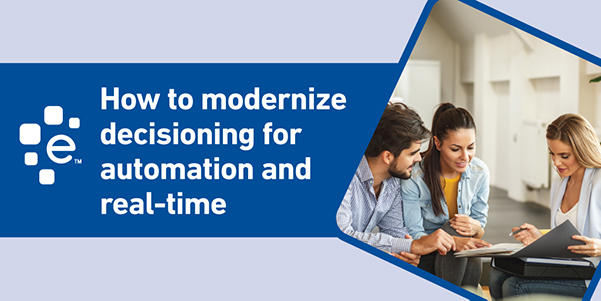
When a new customer wants to establish credit terms with you, the first thing they’re asked to do is fill out your credit application. When you hand over a paper application, did you know you could be negatively impacting your revenue or creating a poor customer experience? Some companies don’t. More than likely, your customer has filled out at least one digital application in the past. The initial perception your application says about your company is that you’re out of step with technology — which may lead them to wonder where else you may be lagging behind. Digital applications provide a simplicity factor, and by not offering one, your credit approval process is perceived to be more difficult, leaving the customer with more work to do —spending extra time writing their information by hand and returning the application — either by email, fax, or in person. Because many companies have already moved to a digital application, your pen-and-paper process sticks out to the customer — and not in a good way. Not to mention, manually processing a paper application takes longer — often much longer — than a digital application. This means customers leave without a credit approval, giving them time to change their mind about their purchase or find a better deal — meaning you just lost a new sale. And even if they still choose to work with you, their relationship with your company starts out with a less-than-amazing customer experience. After the paper application is completed, the workflow process is often time-consuming, error-prone, and cumbersome. The time involved also means that your company waits longer to receive revenue from the sale. By using a manual process, your team spends hours on processing and decisions that could be better spent directly servicing customers or working on other initiatives to grow business. DecisionIQ from Experian automates consistent real-time decisions, streamlining your entire process from applications to onboarding.
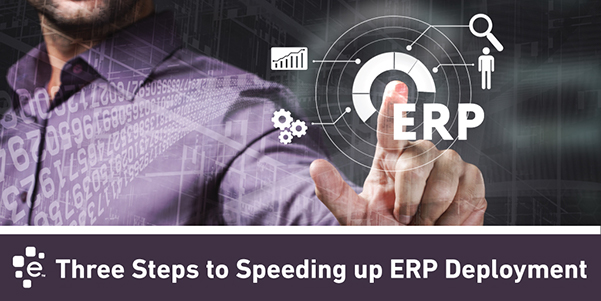
Your company is dependent on many different people — customers to buy products, employees to provide excellent customer service, and vendors to provide services. However, it can be challenging to have an accurate picture of all aspects of vendor relationships. By having clean and connected vendor data, you can more quickly deploy Enterprise Resource Planning (ERP) software. Challenges of Knowing Your Dependency on a Single Vendor Because departments often make their own vendor contracts — hardware, services, office supplies — the relationships are typically not stored in one place and often are in siloed databases. Human resources, marketing and product development could all have independent contracts with the same cloud-software provider for file sharing, and not be aware of the other relationships. It becomes even more confusing because vendor contracts for the same company may have different addresses for satellite locations. Human error also comes into play with typos in addresses and company name spelling mistakes. Companies may merge with each other. Or an office may move to a new location. This makes it challenging, if not impossible, to see a clear picture of your entire relationship with each vendor. Why Vendor Dependency Matters When you know your dependency on a vendor, you can understand your risk and better negotiate volume discounts. If a vendor that provides 45 percent of the materials needed to manufacture a specific product runs into supply issues or is facing serious financial issues, your company knows the impact from the start and can make alternate plans. You can also contact the cloud-software provider used by three departments and ask for preferred pricing based on an accurate number of users. If a vendor is also a customer, knowing your dependency lets you assess the balance of trade between the two companies, meaning how much you buy from the company compared to how much the company purchases from you. Correct vendor profiles are also essential for successfully using ERP. If the vendors are not connected or inaccurate data is imported, the ERP cannot show all relevant data for an organization in one place. You must start the ERP process with clean and connected data for ERP to improve the efficiency of your business and its resources. Otherwise, the deployment process takes longer, and you won’t get all the available benefits an ERP provides. Three steps to preparing vendor data for ERP deployment: 1) Clean your data. You must first clean your data for a consistent view of vendors across all files. Manually going through vendor files would be exceptionally time consuming and error-prone. By using Experian data and technology, you can quickly use databases of company information to correct errors and other issues in the data. 2) Enrich data for an accurate view of relationships. The next step is linking the businesses together across files and departments using a single unique Identifier. Experian’s Business Identification Number (BIN) product, makes this process accurate and quick. Your company can then see a real-time view of current and past orders with each supplier. You can also add additional data, such as credit scores and other supplier-related data. 3) Create a company hierarchy. Even though all the contracts are technically with a single company, departments may be working with a specific division or location for their services. This becomes important if divisions are sold or reorganized. By using a tool, such as Experian’s Corporate Linkage product, you can link the companies into a corporate hierarchy to provide an even clearer view of the relationships. Start getting ready for using ERP software by cleaning, enriching and linking vendor data. The next time you see a vendor mentioned on the news — data breach, bankruptcy, scandal — you don’t have to wonder what it means for your company. With a few clicks, you’ll know your dependency and can start planning. To learn how Experian can help you clean, enhance and link vendor data to speed up ERP deployment, visit www.experian.com.
